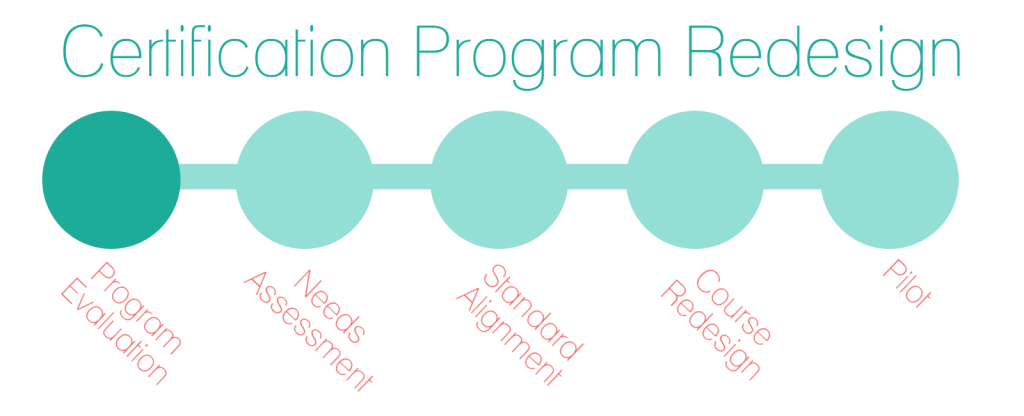
When I talk to people about the Digital Education Leadership program through Seattle Pacific University, I often end up saying, “Well, there’s homework, but it’s not really homework. I do work, but it’s directly related to my responsibilities as a librarian and an educator. So, it’s homework but it’s not really homework. It’s bigger than that. It has more significance than ‘homework.'” While this has been proven throughout the duration of the program, it couldn’t have been more true than when I was offered the opportunity to redesign a Library Media Endorsement certification program… As part of my “homework.”
My classmates and I were recently tasked with conducting a program evaluation. Students learned “how to conduct needs assessments, develop technology-related professional learning programs, evaluate the impact on instructional practice and student learning, and communicate findings to the institution” (Course syllabus). Dr. David Wicks, Chair of the Digital Education Leadership program, came to me with a wonderful opportunity to redesign a university’s Library Media Endorsement (LME) certification program. Because the program is not yet finalized, I am omitting the name of the institution and it will henceforth be identified as “University.”
Program Evaluation
The project was designed to evaluate the current state of the University’s LME program. The University expressed an interest in a project evaluation for a number of different reasons:
- to develop a program that can be taught by University faculty and staff;
- to examine how the current state or national Library Media standards are being addressed in the program;
- to design a program that can be offered to current library staff members interested in obtaining their LME;
- and to design a program that offers students the opportunity to seamlessly combine a graduate degree with the LME, if they so wish.
Findings
After examining the University’s current LME program, I have the following concerns:
- For LME students that are already working in a school library, several of the courses cover the basics of librarianship and would be redundant.
- The LME courses are very foundational based, students often learn through reading and reflection. If students were to learn these skills in a practical application, where they are utilizing what they’ve learning in ongoing fieldwork, their understanding will be far more well-rounded and real world based.
- The courses are taught in a silo, where each course is isolated to a very specific topic. School librarianship is unique in that each moment of the day can look different and requires a number of skills being taught simultaneously (helping a student practice their research skills, while teaching them a specific database, as they learn how to cite a source and hone what they’ve learned to be safe digital citizens). If these topics are taught individually, without context, it will take longer to meld them together when they are working in the field.
- PESB recently decided to move to using the American Library Association/American Association of School Librarians (ALA/AASL) Standards for Initial Preparation of School Librarians by Fall 2016 and even if the LME program were not to make any other changes, the current courses would still need to make significant changes to address these new standards.
- PESB has over 100 standards and sub-standards, whereas AASL has 20 standards and sub-standards, this is a significant change and will require a great deal of focused attention to make the necessary alterations.
- With the current LME program as it stands, there are great variations in the number of standards that are addressed in each course. There are as many as sixty-four standards addressed in one course, whereas another course addresses only ten of the standards.
- With the current LME program as it stands, there are also great variations in the number of times that each standard is address. Some standards are addressed only once, whereas other standards are addressed as many as eleven times in the program.
Next Steps
As my work on the LME redesign continues, I hope to complete the following steps:
- Redesign each course;
- Use the AASL standards to guide the design of the program;
- Create courses that are practical-based and provide students with real world application;
- Create courses that are meaningful to existing school librarians;
- Conduct a Needs Assessment with potential students to learn what they know and what they want to know during their time in the LME program;
- Determine how to best meld together the LME program and a graduate program for the students interested in pursuing their Master’s degree while earning their endorsement.
As I move forward in the various stages of this LME Certification Program Redesign, I will document my progress in further blog posts. Check back to read about my work in conducting a Needs Assessment, working to align past and future standards, redesigning the individual courses and, eventually, piloting this exciting new program!
References
Wicks, D., & Calvery, S. (2016) . EDTC 6106 educational technology leadership [Class syllabus]. Department of Education, Seattle Pacific University, Seattle, WA.